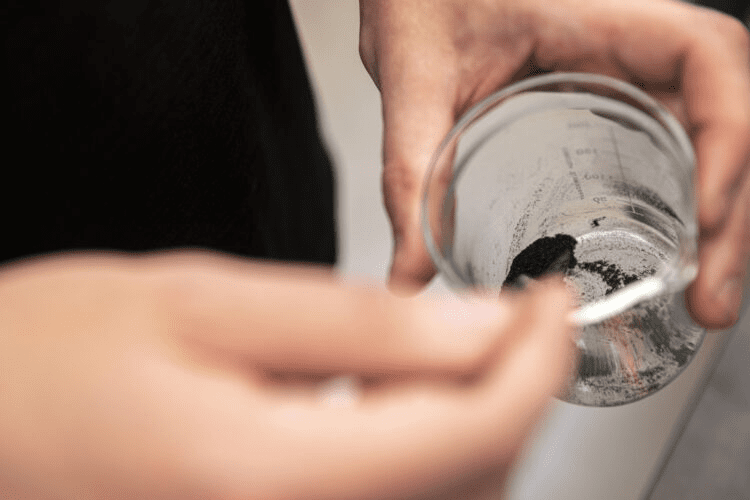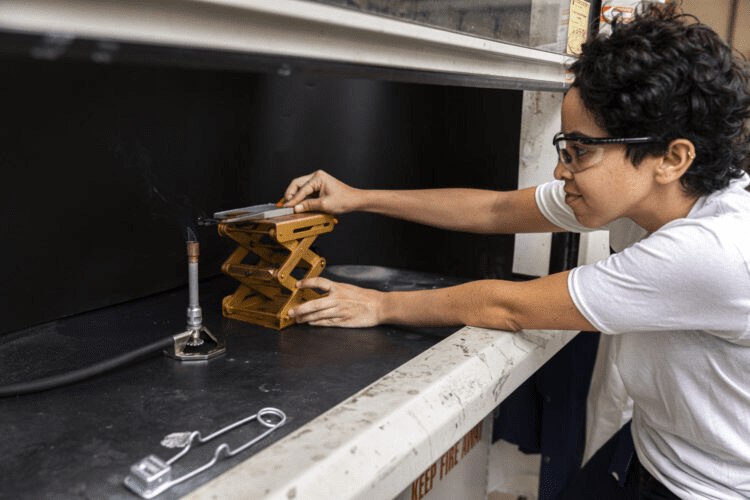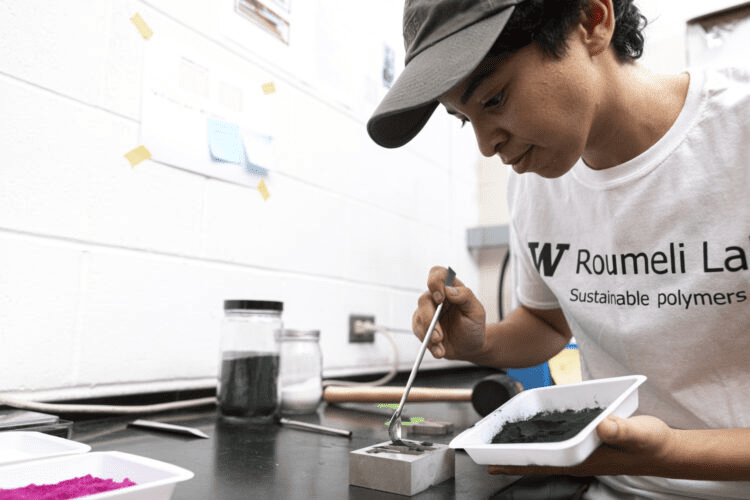We use plastics in almost every aspect of our lives. These materials are cheap to manufacture and incredibly stable. The problem comes when we run out of plastic - it can last for years in the environment. Over time, plastics break down into smaller pieces called microplastics, which can cause serious environmental and health problems.
The best solution is to use biodegradable, bio-based plastics, but many of these are not designed to be degraded under backyard composting conditions. They must be processed in commercial composting facilities, which are not available in all areas.
A team led by researchers at the University of Washington has developed a new bioplastic that degrades in the same amount of time as a banana peel in a backyard compost bin. These bioplastics are made entirely from powdered blue-green cyanobacteria cells, also known as spirulina. The team used heat and pressure to form spirulina powder into a variety of shapes using the same processing techniques used to make traditional plastics. The University of Washington team's bioplastic has mechanical properties comparable to single-use petroleum-derived plastics.
The team published these findings on June 20 in Advanced Functional Materials.
"We are motivated to create bioplastics in our backyard that are both bioderivable and biodegradable, but also processable, scalable and recyclable," said senior author Eleftheria Roumeli, assistant professor of materials science and engineering at the University of Washington. "The bioplastics we developed using only spirulina not only have degradation characteristics similar to those of organic waste, but are also on average 10 times stronger and harder than previously reported spirulina bioplastics. These properties open up new possibilities for practical applications of spirulina-based plastics in a variety of industries, including disposable food packaging or household plastics such as bottles or trays.

Spirulina cell powder (green powder in container)
The researchers chose to use spirulina to make their bioplastic for several reasons. First of all, it can be grown on a large scale as people are already using it for various foods and cosmetics. In addition, Spirulina cells absorb carbon dioxide as they grow, making this biomass a carbon-neutral or potentially negative plastic feedstock.
"Spirulina also has unique fire-resistant properties," said lead author Hareesh Iyer, a PhD student in materials science and engineering at the University of Washington. "When exposed to fire, it immediately self-extinguishes, unlike many traditional plastics that either burn or melt.
This fire-resistant property gives spirulina-based plastics an advantage in applications where traditional plastics are not suitable due to their flammability. Plastic racks in data centers are an example of this, as the systems used to keep servers cool can get very hot.

One of the benefits of using spirulina to make bioplastic is that it is fire resistant. Mallory Parker, a PhD student in materials science and engineering at the University of Washington, demonstrated that bioplastics molded into light beams do not catch fire or melt.
Manufacturing plastic products typically involves a process of molding plastic into a desired shape using heat and pressure. The University of Washington team took a similar approach with their bioplastics.
"This means that if we want to use our materials on an industrial scale, we don't have to redesign the production line from scratch," Roumeli says. "We've removed a common barrier between the lab and scaling up to meet industrial needs. For example, many bioplastics are made from molecules extracted from biomass, such as algae, and mixed with performance modifiers before being cast into film. This process requires the material to be in solution prior to casting, which is not scalable.
Other researchers have used spirulina to make bioplastics, but the University of Washington researchers' bioplastic is stronger and tougher than previous attempts. The UW team optimized the microstructure and bonding within these bioplastics by varying their processing conditions (e.g., temperature, pressure, and time in an extruder or hot press) and studying the structural properties of the resulting materials, including their strength, stiffness, and toughness.

Mallory Parker, a PhD student in materials science and engineering at the University of Washington, adds spirulina powder to a UW logo mold. Once this mold goes into the heat press, it produces a piece of plastic in the shape of the UW logo.
These bioplastics are not yet ready to be scaled up for industrial use. For example, while these materials are strong, they are still quite brittle. Another challenge is that they are sensitive to water.
"You don't want these materials to get rained on," Iyer said.
The team is addressing these issues and continuing to work on the underlying principles that determine the way these materials behave. The researchers hope to create a variety of bioplastics to be designed for different situations. This will be similar to the existing variety of petroleum-based plastics.
The newly developed materials are also recyclable.
"Biodegradation is not our preferred end-of-life option," Roumeli said. "Our spirulina bioplastics can be recycled through mechanical recycling, which is very accessible. However, people don't usually recycle plastics, so the fact that our bioplastics degrade quickly in the environment is an added benefit."

